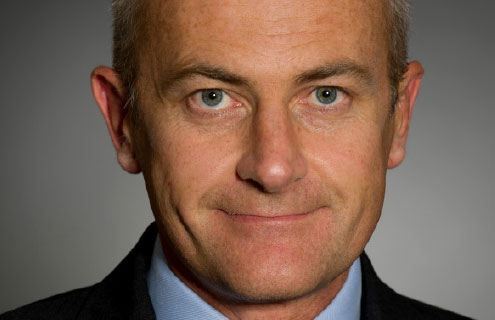BNP Paribas Securities Services
The French bank’s head of clearing, settlement and custody product, Philippe Ruault, tackles Target2-Securities and its next stages
BNP Paribas is joining the T2S project during the first wave in Italy. Does that put you in good stead to deal with the later waves as well?
Starting alongside Italy is good for us. The country is the ideal location for us. Being one of our major locations, we have a large and experienced team over there. Who started working on the Target2-Securities (T2S) project in 2008. We looked at the origins of T2S and prepared ourselves by rolling out a single platform across our Italian, German and Spanish markets and we have now deployed this to the rest of the T2S markets, including Spain this year. When the first wave goes live, all of the benefits of the migration in Italy will also be leveraged for other markets. Single interfaces allow for the same processes and the same functionalities.
We developed our straight-through processing platform in-house, and we first rolled it out in Germany and Italy six years ago. We are now in the final roll-out stages for Spain, which is our last T2S market to join the new platform. We have also deployed this in all of our new markets, for example, Hong Kong, Singapore and Sydney. It’s entirely proprietary, and leveraged to meet all the markets after those involved in the first wave of T2S.
What do expect to be the major benefits of T2S?
T2S will drive harmonisation of settlement across Europe, but will bring a number of advantages on liquidity aspects. We have added features to our products to help with liquidity, which could benefit some of the big investment banks when regulation obliges them to get more certainty around their credit and overnight lines. T2S is a facilitator for that, as clients can pool their cash in a single central bank account and leverage new credit lines at another central bank. It adds transparency, and companies have more control, managing more of their assets themselves.
Of course, we will continue to play a role. We have launched Liquidity Access, a tool directed to help with all aspects of liquidity management in the new environment, including reporting. Clients can ask us for information on their actual liquidity consumption in the settlement market, and we can provide intra-day reporting and real-time reporting to show them exactly where they stand in terms of their liquidity.
We are moving towards disclosure of intra-day lines and committing to these lines. Whatever the situation, whatever the stress on the market, we will be able to tell clients exactly how much they have available for intra-day liquidity.
Does this increase the cost burden?
In terms of investment, definitely. The deployment of the single platform has been a €15 to €20 million project for us. We have mobilised 80 people to help clients that want to design specific models for their particular T2S requirements. It has been a significant cost, but we have retained our core client base and acquired additional clients for our regional offers, so it was a wise investment.
How much of an effect will T2S have on asset servicing?
There will be big changes to settlements, and the format will change for some clients. On the asset servicing side, our main priority is minimising the impact for clients. We are rolling out guidelines for corporate actions now, as new directives have come in that, for example, change the way things are done with recalled debt and new messages. Our Euronext market offering is more advanced, so we are starting from there to deploy any changes in corporate action processes across the market. We think this will make a big difference when the first wave of T2S goes live.
BNP Paribas has a large client base in Europe and the APAC region. What have you done to reach out to the Americas?
In 2012, we launched sub-custody in the US market, which was, again, a significant investment. We are the first foreign firm to set up a new sub-custody offering in that market for about 20 years, so there’s a big push to develop there. We are ambitious in terms of winning Asian and European accounts for sub-custody in the US and developing a franchise of global custody service to US investors.
As a new entrant to this market, do you have to be more aggressive with pricing?
Not at all. It is important to charge the current market price. Pricing in the US is a benchmark for the rest of the world in terms of customer fees, and the last thing we want to do is to start a pricing war. It is our level of customer service that makes us successful and we want to come in to this market as a fresh provider, eager to develop our services and advance in that way. This is a market with a great legacy of long-term providers, and we have to respect that.
Is there a difference in the way you approach the US market, compared to Europe and Asia?
It is a competitive market and we are up against firms that have been at it for 20 years or more. The difference is that, in the US, the assets are massive so there are always bigger mandates and that’s quite attractive. In markets such as Brazil or Colombia, you need many clients to reach the same size as the US.
Also, as we are a global custodian, it is important for us to keep our assets safely in our own branches in the US, simply as a key aspect of guaranteeing asset safety. Launching sub-custody in the US has helped allow us to hold an average of 90 percent of our clients’ assets in our own network around the world.



